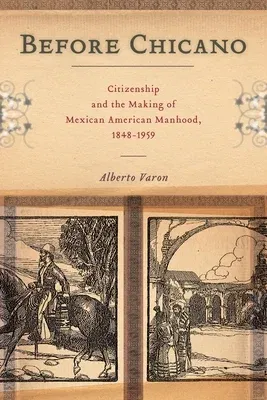**Uncovers the long history of how Latino manhood was integral to the
formation of Latino identity
**
In the first ever book-length study of Latino manhood before the Civil
Rights Movement, Before Chicano examines Mexican American print culture
to explore how conceptions of citizenship and manhood developed in the
nineteenth and twentieth centuries. The year 1848 saw both the signing
of the Treaty of Guadalupe Hidalgo that ended the U.S. Mexican War and
the year of the Seneca Falls Convention, the first organized conference
on women's rights in the United States. These concurrent events signaled
new ways of thinking about U.S. citizenship, and placing these
historical moments into conversation with the archive of Mexican
American print culture, Varon offers an expanded temporal frame for
Mexican Americans as long-standing participants in U.S. national
projects.
Pulling from a wide-variety of familiar and lesser-known works--from
fiction and newspapers to government documents, images, and
travelogues--Varon illustrates how Mexican Americans during this period
envisioned themselves as U.S. citizens through cultural depictions of
manhood. Before Chicano reveals how manhood offered a strategy to
disparate Latino communities across the nation to imagine themselves as
a cohesive whole--as Mexican Americans--and as political agents in the
U.S. Though the Civil Rights Movement is typically recognized as the
origin point for the study of Latino culture, Varon pushes us to
consider an intellectual history that far predates the late twentieth
century, one that is both national and transnational. He expands our
framework for imagining Latinos' relationship to the U.S. and to a past
that is often left behind.

